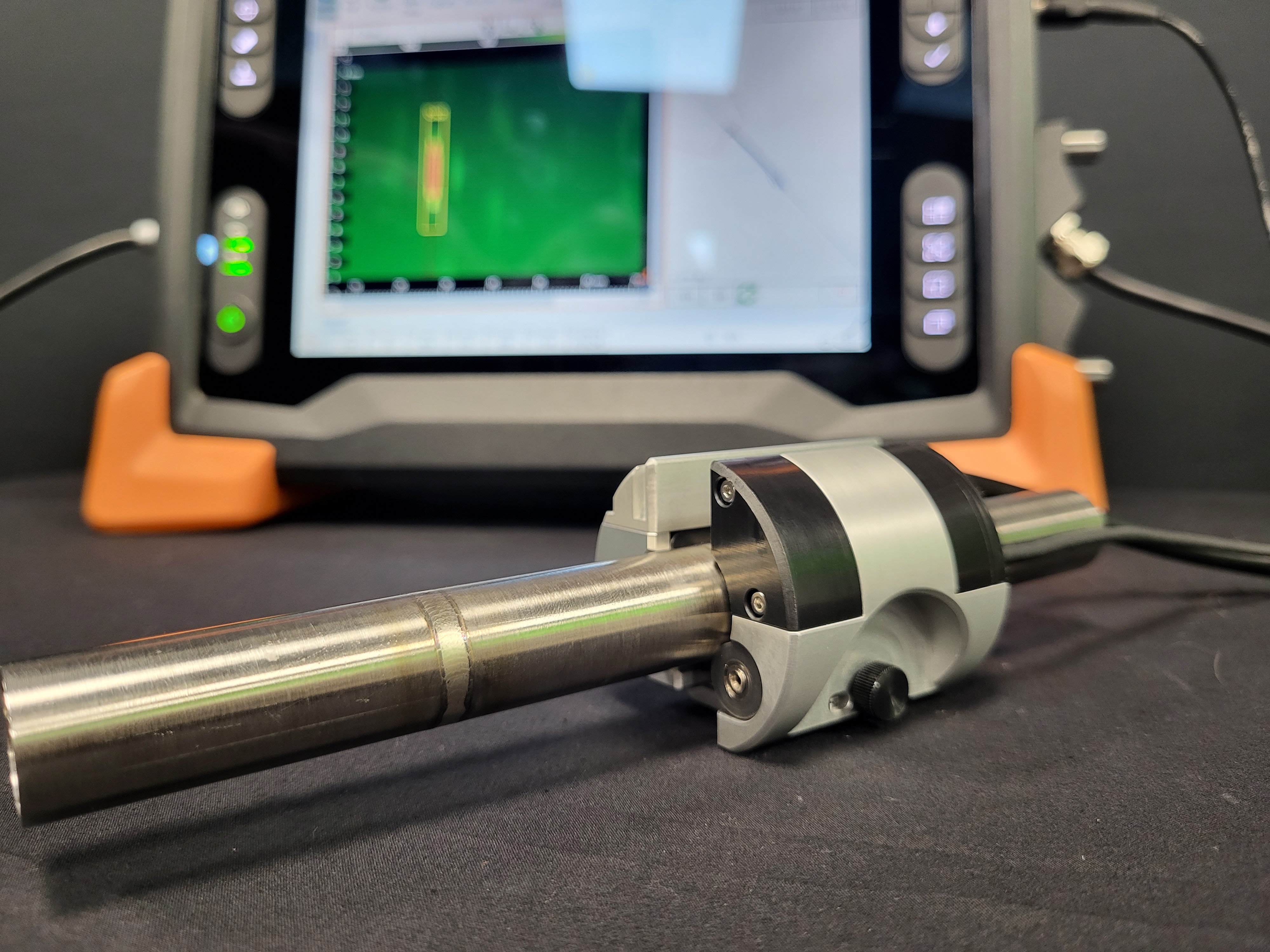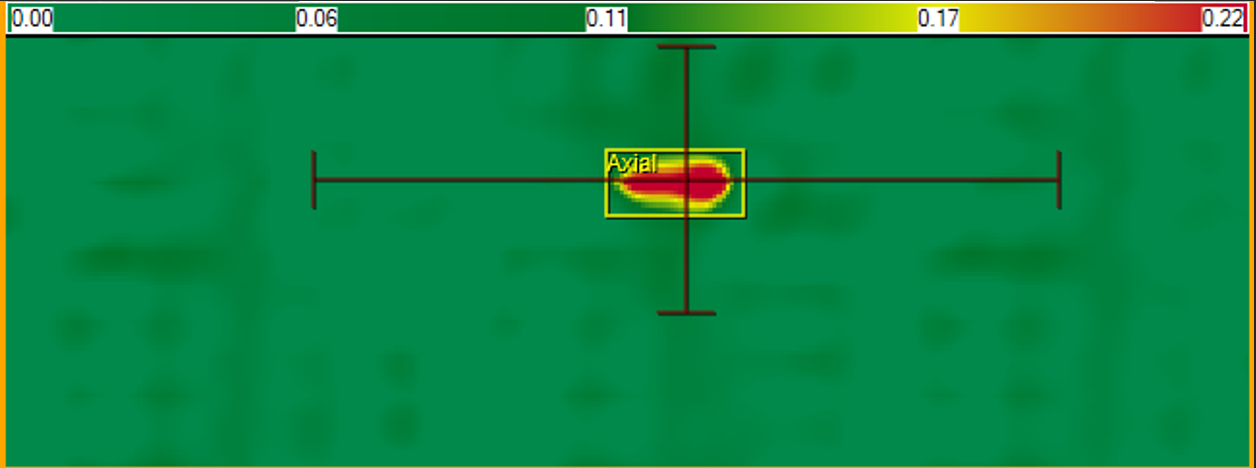The Fast and Reliable Alternative for Orbital Weld Inspection: Eddy Current Array
Ask an expertOrbital welding is a widespread process used in the aerospace industry to produce high quality joints in fuel lines, brake lines, and hydraulic lines. The integrity of these welds is critical; a small defect could cause a leak and pose a major safety issue. To ensure the reliability of rockets and aircraft, non-destructive inspection is used to ensure the quality of the joint and prevent weld failure. Currently, penetrant testing and radiography are the most widespread methods used to conduct this non-destructive inspection. However, it can require up to one hour for a single weld. With hundreds of orbital welds in a spacecraft, this inspection can become intensive in both time and resources. Radiography can also be difficult to deploy due to the safety zone requirements and the limited space around the tubes. This demonstrates the need to develop an alternative non-destructive testing method that would meet the detection performance required for orbital welds while drastically reducing the inspection time. To tackle the multiple challenges involved, the team at Eddyfi Technologies is proud to present a new and more economically viable solution based on eddy current array (ECA).
The Challenge
The inspection of orbital welds is highly time consuming and calls for a more efficient method of non-destructive examination

Orbital welding was developed in the 1960s to prevent leakage issues from hydraulic and fuel systems. These tubes are usually small in diameter and are located in areas with restricted access, which makes manual welding difficult and unreliable. Instead, orbital welding is an automated process that produces a high-quality tungsten inert gas, or TIG, weld that is now widely used in aircraft and rockets. But even with a highly controlled welding process, defects such as small cracks and porosities can still be present in the joint. Over time, these defects can propagate and lead to fuel leakage, potentially causing propulsion system failure. The current inspection procedures involve penetrant testing combined with radiography, which yield good detection performance and reliability. However, because it can take up to one hour to inspect a single orbital weld, this technique is costly and time-consuming.
In itself, the inspection of orbital welds presents several challenges. First, a lot of fuel lines have a diameter as small as 3 millimeters (0.125 inches) with very thin walls of less than 1 mm (0.04 in). Orbital welds can also be hard to reach or located close to a bend of the fuel line. Finally, even small defects like porosities can compromise the integrity of the welds and need to be detected at an early stage.
The Solution
A custom eddy current array probe that clamps around the orbital weld was designed for high-resolution inspection.

The results show a high Signal-to-Noise Ratio (SNR) which leads to reliable detection. Using Magnifi® acquisition and analysis software, the defects can be automatically tagged based on an adjustable signal threshold. Advanced data analysis tools such as filters can help reduce the level of noise, further improving the SNR.
Ask an ExpertTo tackle this challenge, Eddyfi Technologies worked with multiple aerospace companies to develop a family of eddy current array (ECA) probes that are designed specifically for the inspection of orbital welds. The probe body consists of a mechanical clamp that attaches to thea tube. Inside the probe, an array of small high-resolution coil sensors ensures proper coverage of the weld, while maximizing the resolution. An encoder is embedded in the probe to facilitate the circumferential positioning and length sizing of the defects. The probe is designed to be rotated manually around the orbital weld in an encircling motion. This guarantees good contact between the sensors and the surface while allowing the inspection of the whole circumference in a single pass. This design makes the inspection repeatable, operator independent, and much faster than inspecting the same weld using penetrant testing and radiography. The whole inspection process with eddy current array only takes a few minutes.
In an effort to make the probes as versatile as possible, they were designed to each accommodate a range of weld diameters. For example, welds between 32 mm and 51 mm (1.25 to 2.0 in) can all be inspected with the same unique probe that will ensure a close contact between the eddy current sensors and the weld. The size of the probes was also minimized to ensure their successful deployment in tight spaces or close to bends in the tube lines. For inspections requiring an even smaller or thinner probe, it is always possible to customize the existing design by adjusting its thickness and overall diameter.
For the detection of surface-breaking flaws on the outer diameter of the weld, the ECA solution works on any type of material used for orbital welding: titanium, zirconium, stainless steel, and so on. The image below shows the C-scan indication of a surface-breaking crack 2 mm (0.080 in) long by 0.2 mm (0.008 in) deep in titanium. A detection gate with an adjusted threshold helps to identify the defects without requiring manual data analysis.


Small Crack
Benefits
The developed solution makes it possible to reliably:
- detect small inner and outer cracks within only a few minutes.
The eddy current array system designed by the team at Eddyfi Technologies makes it possible to inspect and analyze the data of an orbital weld within minutes, leading to time savings of over 90% compared to the traditional inspection procedure that uses liquid penetrant and radiography. Its mechanical design ensures that the inspection is fast and repeatable. Thanks to the Magnifi software, data is easily visualized and recorded while making defect identification operator independent. Sign up for our surface and ECA inspection course at the Eddyfi Academy to learn more.
Research and development effort is also being carried out for the detection of internal flaws like cracks and clusters of porosities that are not breaking the outer surface of the weld. Custom eddy current sensors are required to penetrate the wall thickness more deeply and detect those internal flaws. Internal weld cracks with a depth of 40% of the wall thickness have been detected with this method. Contact us for more information on custom ECA probes.
Compared to visual inspection and radiography, Eddyfi Technologies’ eddy current array solutions save both time and money by reducing tenfold the time required to conduct the inspection of orbital welds. Build your custom quote today or contact us for more information.








